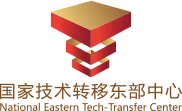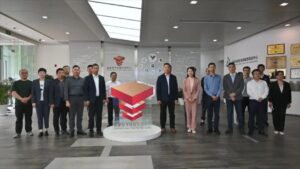Phenomenon Watch: Foreign investment is leaving China
Since 2004, there has been an outflow of foreign capital from various industries, and the exit of foreign companies from China has accelerated in recent years, mainly concentrated in the manufacturing industry, covering TMT, home appliances, retail and other fields, many of which are multinational giants.
Phenomenological Analysis.Why foreign investorsWithdrawal from China
Withdrawal from Chinaforeign-owned enterprisecanpartforfollowing three categories.
1. Low-end manufacturing enterprises, is also an industry that needs adjustment in China, at present, Chinese local enterprises in this field is fully capable of competing with it, the market competition is fierce;
2. In the course of their globalization strategies, multinational enterprises take measures such as mergers and restructuring to restructure and reorganize their global operations;
3. Multinational enterprises, especially in the IT and retail industries, some of them have withdrawn from the Chinese market due to their inability to adapt to China's conditions.
In-depth foreign investmentReasons for evacuationavailable fromthe following fouraspectCome to see.
NO1: At the policy level, the increase in policy entry barriers and the removal of preferential policies have brought about changes in costs, as well as increased regulatory pressures, making it more difficult than ever for foreign firms to operate.
No 2: From an economic perspective, under the new normal, the business model of multinational enterprises will be under increasing pressure, corporate profitability data is scarce. For many industries, China is no longer an "emerging market", the days of maintaining high profit margins (15%-20%) are gone.
No. 3: At the level of the social structure, changes in demographics and educational attainment have raised labour costs and risks across the board.
No 4: From the technological point of view, multinational enterprises neglect, lack of innovation and lack of market response capability, highlighting the lack of competitiveness.
foreign capitalWithdrawal from Chinatimetables
|
time |
company |
industry |
events |
leavecause |
|
2006 |
Ebay |
TMT |
Exit China market |
Experiencing strong competition from local firms |
|
2009 |
Nike, Inc. |
footwear |
Closure of factories in China and relocation to other developing countries |
Inventory, channel issues |
|
2010 |
|
TMT |
Exit China market |
Network censorship, hacking |
|
2010 |
Matsushita (name) |
home appliances |
Close China factory and move back to the mainland |
losses |
|
2010 |
Sharp (company name) |
home appliances |
Close China factory and move back to the mainland |
losses |
|
2011 |
Best Buy (retailer) |
retail |
Exit China market |
sharp fall in profits |
|
2011 |
Nestlé |
fast moving consumer goods |
Exit China market |
Squeezed out by local firms |
|
2011 |
Danone, Japanese company |
fast moving consumer goods |
Exit China market |
Squeezed out by local firms |
|
2011 |
Pepsi |
fast moving consumer goods |
Core bottling business exits China market |
Business strategy alignment |
|
2012 |
Rakuten (brand) |
TMT |
Exit China market |
Experiencing strong competition from local firms |
|
2012 |
Adidas (sportswear company) |
footwear |
Closure of factories in China and relocation to other developing countries |
Rising labour costs |
|
2013 |
Yahoo, Internet portal |
TMT |
Exit China market |
Experiencing strong competition from local firms |
|
2013 |
Foxconn Technology Group |
electron (particle physics) |
Closure of factories in China and relocation to other developing countries |
Rising labour costs |
|
2014 |
MSN |
TMT |
Exit China market |
Poor operational performance |
|
2014 |
Adobe |
TMT |
Exit China market |
Poor business conditions and widespread piracy |
|
2015 |
Zynga |
TMT |
Exit China market |
Failure of high-level decision-making |
|
2015 |
Compuware |
TMT |
Exit China market |
Poor operational performance |
|
2015 |
microsoft |
TMT |
Mobile phone business closes China factory, moves to other developing countries |
Rising labour costs |
|
2015 |
Daikin |
home appliances |
Close China factory and move back to the mainland |
Rising labour costs |
|
2015 |
TDK |
home appliances |
Close China factory and move back to the mainland |
Rising labour costs |
|
2015 |
Funai Motors |
electron (particle physics) |
Closure of factories in China and relocation to other developing countries |
Rising labour costs |
|
2015 |
singing |
electron (particle physics) |
Closure of factories in China and relocation to other developing countries |
Rising labour costs |
|
2015 |
Samsung (South Korean electronics company) |
electron (particle physics) |
Closure of factories in China and relocation to other developing countries |
Rising labour costs |
|
2015 |
Uniqlo (brand) |
outfits |
Closure of factories in China and relocation to other developing countries |
Rising labour costs |
|
2015 |
Ito-Yokado |
outfits |
Closure of factories in China and relocation to other developing countries |
Rising labour costs |
|
2015 |
Citizen City |
watch |
China plant closure |
Rising labour costs |
dataSpeaking.The other behind the retreatone side
ChinaDepartment of CommerceFDI data
From January to September 2015, 18,980 foreign-invested enterprises were set up in China, up 10.1% year-on-year; the actual amount of foreign investment used was 584.74 billion yuanRenminbi (RMB)($94.9 billion)dollar).In the month of September, the country set up 2,153 foreign-invested enterprises, up 5.21 TP1T year-on-year; the actual amount of foreign investment in use was 59.47 billion yuan (US$9.56 billion), up 7.11 TP1T year-on-year.From January to September, China's foreign investment absorption showed good momentum, in marked contrast to the current decline in global cross-border direct investment.
Data from Xinhua News Agency
The country's foreign investment absorption in January-September 2015 showed the following characteristics:
1.Stable growth in the overall scale of foreign investment.
2.The industrial structure was further optimized, and foreign investment in high-tech services and high-tech manufacturing continued to maintain its upward momentum.
3.East, central and western regions all showed growth in the real use of foreign capital.
4.The scale and proportion of foreign-invested M&A have both increased substantially.
Shanghai governmentdata
From January to August 2015, there were 32 new MNC regional headquarters, three headquarters-based organizations, and 10 companies recognized as Asia-Pacific headquarters in Shanghai (Henkel, NXP, Energizer and other well-known MNCs have their Asia-Pacific headquarters in Shanghai); nine new investment companies; and nine new research and development centers. By the end of August 2015, a total of 522 regional headquarters of foreign multinational corporations had been established in Shanghai, of which 36 were Asia-Pacific headquarters, 306 were investment companies and 390 were R&D centers.
Shanghai, January-August 2015foreign capitalThe following features are present.
1.From investmentsCountry-by-country view.maindominated by European, American and Japanese companies.Among them, the growth rate of European corporate headquarters accelerated.
2.fromInvestment industrydistributionCome and see.Inregional headquarterscross-borderBusinesses remain predominantly manufacturing.
3.In terms of investment settlement area, the FTAZ becomes theHotspot.
4.frominvestmentgenreCome and see, the R&D centerbecome a trend.As of the end of August 2015, the number of foreign-funded R&D centers located in Shanghai had reached 390, accounting for about 1/4 of Mainland China, including 30 global R&D centers and 15 Asia-Pacific R&D centers, including General Electric (GE) Shanghai R&D Center, DuPont Shanghai R&D Center and Unilever China Research Institute, all of which are the top-level R&D institutions of the Group's global footprint.
outlooklook forward to: The opportunity behind the retreat
NO1: Local Enterprises asThe ontology of innovation, more and morelocalFirms usher in as foreign investors leave ChinanewThe opportunity.
1. Market opportunities are expanding
After the withdrawal of foreign companies from China, the market landscape has changed, more advantageous companies need technology for technological innovation layout of China, and even the world. Huawei, for example, he was able to quickly catch up in the field of mobile communication equipment, the most rapid changes in the technological revolution, and has now become the world's largest mobile communication equipment manufacturers, in fact, is the integration of global research and development resources, using the global market and talent to achieve leapfrog development. In the context of the Internet + era, BAT, for example, Baidu, Alibaba, Tencent and other companies have crossed the border, set foot in other areas, the layout of emerging industries in order to expand their business territory.
2. Investment opportunities are expanding
After a foreign company leaves China, its original business and technology are either hosted or resold to Chinese companies. In the meantime, local Chinese companies are able to quickly gain access to the advanced technology, R&D capabilities, and international sales channels of the acquired companies by conducting mergers and acquisitions at a lower cost.
3. Talent acquisition opportunities are expanding
After the foreign companies leave China, their original R&D teams will inevitably be transferred to local Chinese companies to strengthen the R&D capabilities of domestic companies.
NO2.Foreign companies at the high endmanufacturing industriesinformationTechnological advantages in industries such as banking and financedistinct.surname Suiwith the further liberalization of investment policies in the Chinese market.encourageMore and more foreign-owned enterprisesInThese areasgive full play to one's abilities.
1. Investment opportunities are expanding
A.Clear policy direction in terms of market access
Against the backdrop of China's development, transformation and new normal, China intends to fully liberalize access to foreign investment and implement a "negative list" management model, which means that foreign investors are not required to apply for access permits but only to submit information reports for investments outside the list of special administrative measures, and the organization and business activities of foreign-invested enterprises will no longer be the main regulation. Object. The new Catalogue for the Guidance of Foreign-invested Industries significantly reduces the entries of restricted foreign-invested industries, and explicitly proposes to encourage foreign investment in modern agriculture, high-tech, advanced manufacturing, energy conservation and environmental protection, modern service industry and other fields, and undertake the transfer of high-end industries. It also encourages foreign investment in research and development, and promotes the organic integration of investment attraction, technology attraction and intelligence attraction.
In Shanghai, for example, since the birth of the Shanghai Free Trade Zone (SFTA) in September 2013, the "negative list" has been widely implemented as a core management mode in the SFTA and has become the biggest highlight. 2014 saw a quarter reduction in the number of special administrative measures for foreign investment access in the Shanghai SFTA compared to the previous year. A new version of this year's negative list is under study and will further enhance openness and transparency.
B.From an industry perspective, new industries are in high demand
China's economic development has entered a new normal, with new technologies, new products, new formats and new business models emerging continuously, with a bright future. At the same time, in the process of economic transformation, the role of new industries, service industries and small and micro enterprises has become more prominent, and the development of small, intelligent and specialized production has brought more investment opportunities.
Emerging industries are becoming more attractive to foreign investors. In the automotive industry, for example, more and more multinational companies are setting up R&D centers in China, or establishing R&D centers, or setting up joint ventures with dominant local Chinese companies to undertake R&D functions.
2.Talent acquisition opportunities are expanding
When foreign companies land in China, it also creates a convergence of talents in China. Coupled with the implementation of supporting government policies, more and more overseas managers, scholars, engineers and other high-level talents are returning to China for development.
Seizing the opportunity of foreign investors leaving China, BVIC's Enterprise Open Innovation and Soft Landing China Service Packages offer you customized technology transfer services.
Enterprise Open Innovation Service Package
In the face of a rapidly changing market and intense competition, large enterprises have realized that closed innovation is exhausted. As the scale of operations continues to expand, many large enterprises have adopted a new model of open innovation, which is "a combination of internal and external resources to restart the innovation engine." To this end, we offer an Enterprise Open Innovation Package that can be customized to meet your needs.
--Research
- Technology search for specific needs
- Research/information analysis of specific industry topics
---platform
- Co-build incubation platform
- Co-built R&D outsourcing platform
--Talent
- Innovation/team recruitment
- Recruitment of Industry Opinion Leaders
Soft Landing China Program
Chinese partners and investors search for and establish partnerships to meet the needs of global clients for technology licensing, transactions, project collaboration and financing opportunities.
--Grounded consultancy
- law
- taxation
- policy
--Seeking partners
- Strategic Co-Investor
- agents
--Establishment of companies in China
- branch office
- R&D Center









